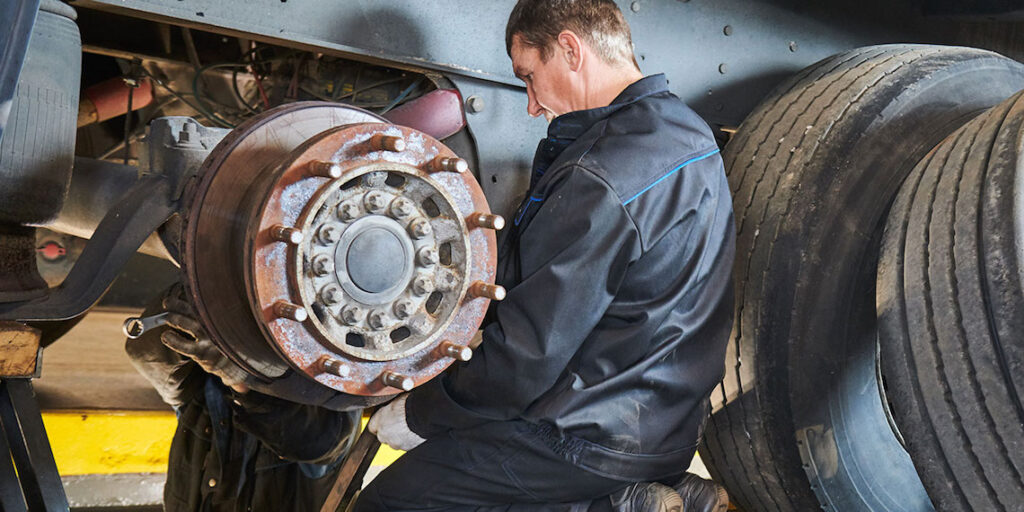It’s important that your technicians are trained on how to spot brake wear, and that your shops have systems and schedules in place aimed at avoiding wear issues on brakes.
“The only real way to keep an eye out for irregular brake wear is visual inspection on both drum and disc systems. Spotting irregular wear provides early troubleshooting evidence that the systems might not be working optimally and can save some headaches down the road,” says Keith McComsey, director of marketing and customer solutions (wheel-end) with Bendix Spicer Foundation Brake. “There is a lot of talk about air disc brakes [ADBs] being more robust with extended service intervals; however, that does not replace doing routine service inspections.”
A visual inspection should cover the following, according to Tony Ryan, technical services and training manager for SAF-Holland:
- Inspect for secure mounting, wear, leaks, corrosion and damage.
- Check for loose, broken or cracked air hoses, air system leaks and damaged components.
- Check that brake hoses and cables are properly secured.
- For proper brake pad wear, check that there is enough clearance to allow the caliper full movement during normal operation.
- Check the spring brake chambers to make sure the parking springs are not caged in the released position. Be sure the dust plugs are properly installed.
- Make sure that the vent holes in the air brake chamber are not covered with snow, ice, mud, etc.
- Inspect the wheel-bearing unit for grease leaks at every brake pad change.
- Visually check the brake assembly (e.g. pads, rotor, etc.) for oil or grease contamination.
- Check that all dust caps and boots are present and in good condition.
- Regularly conduct general safety checks in accordance with any applicable laws.
- After every wheel change, the wheel nuts must be re-tightened to the specified torque level after the initial 100 miles of operation, and then at every regular service interval.
From there, you need to go beyond the visual inspection, according to Bendix’s McComsey. He recommends the following extra steps:
- Look at the slack adjusters to make sure they are at equal angles during parking brake apply, in the at-rest position and brake pedal apply.
- Lubricate the clevis pins and make sure the pins are not loose or frozen in the slack/clevis.
- Measure applied stroke at 90 to 100 PSI and make sure they are equal at all wheel ends. Follow the out-of-service guidelines for chamber size.
